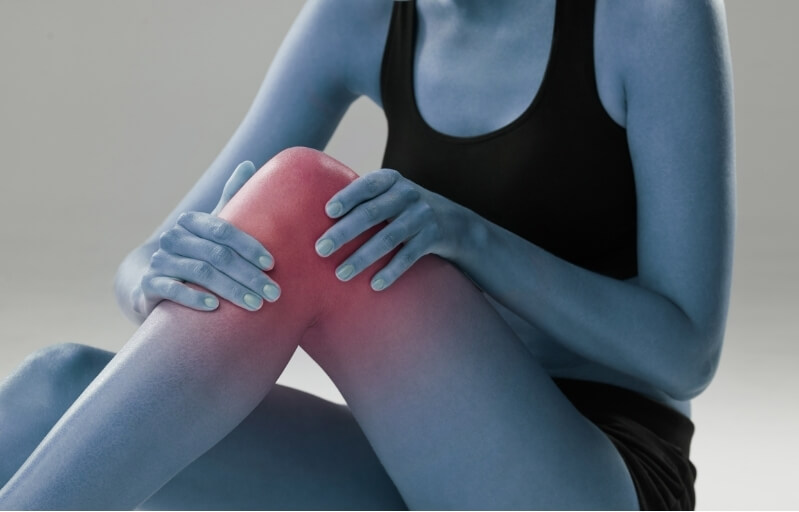Blog, Physiotherapy
ACL Injury: Exploring the Best Treatment Path for You

Each year, around 17,000 Australians experience anterior cruciate ligament (ACL) injuries, making it one of the most common yet debilitating knee injuries.
These injuries often occur due to a sharp twist during sport or an unexpected stumble in day-to-day life.
Beyond the pain, an ACL tear can significantly affect mobility and limit your ability to perform basic activities like walking or climbing stairs. When faced with this challenge, choosing between surgery or a non-surgical approach can feel overwhelming.
In this article, we explore three key topics every ACL sufferer should understand:
- The 3 grades of ACL injury
- The differences between surgical and conservative management
- What to consider when deciding between the two options.
1. Understanding ACL Injury Grades
ACL injuries are categorised based on their severity:
- Grade 1: The ligament is overstretched but remains intact, leading to mild swelling and tenderness without instability.
- Grade 2: This involves a partial tear, causing noticeable looseness in the knee and functional limitations.
- Grade 3: A complete rupture where the ligament is torn entirely, resulting in significant instability and reduced knee function.
2. Surgical vs Conservative Management
Surgical Treatment: Restoring Stability
Surgery is often recommended for Grade 3 injuries or for individuals aiming to return to high-impact sports or physically demanding activities. The procedure involves reconstructing the damaged ligament with a graft, typically sourced from the patient’s own hamstring or patellar tendon. Research shows that 85-90% of patients who undergo ACL reconstruction regain pre-injury levels of activity.
However, surgery has its challenges. The rehabilitation process can take six to twelve months and requires a strong commitment to physiotherapy. There are also risks to consider, such as graft failure or early-onset osteoarthritis. Interestingly, research indicates that young athletes who return to pivoting sports remain at risk of re-injury, even with surgical intervention.
Conservative Management: Strength Through Rehabilitation
For those with Grade 1 or 2 injuries, or even Grade 3 tears in individuals with lower activity levels, conservative management through physiotherapy can be highly effective. This approach focuses on strengthening the surrounding muscles, improving knee stability, and enhancing balance and proprioception.
Evidence supports the success of non-surgical treatment, with studies showing that up to 50% of patients achieve similar outcomes to surgical cases when following a structured rehabilitation program. However, persistent knee instability or repeated episodes of the knee “giving way” may ultimately require surgery to protect the joint from further damage.
3. Factors to Guide Your Decision
When deciding between surgery and conservative management, consider the following:
- Severity of ACL tear: Grade 1-2 injuries are typically managed conservatively. For Grade 3 injuries with ongoing instability, surgical management is often advised.
- Activity Level: Individuals participating in high-level sports or heavy manual work may benefit more from surgical intervention.
- Age and Longevity: Younger individuals often opt for surgery to prioritise long-term joint stability.
- Recovery Goals: If minimising downtime is a priority, starting with non-surgical management may allow you to begin rehabilitation immediately.
The Vital Role of Physiotherapy
Regardless of which treatment path you choose, physiotherapy plays a crucial role in recovery. At M Physio, we design tailored rehabilitation programs to meet your specific needs, ensuring you regain strength, build confidence, and prevent future injuries.
If you or someone you know is navigating an ACL injury, we’re here to help. Call 1800 992 999 or visit M Physio to book an appointment and take the first step towards reclaiming your active life.
 |
Written By:
Bachelor of Physiotherapy (Hons) |
References
Beynnon, B. D., et al. (2005). “Anterior cruciate ligament reconstruction and other knee surgery outcomes.” American Journal of Sports Medicine, 33(10): 1543-1551.
Grindem, H., et al. (2016). “Risk of knee re-injury in young athletes: a systematic review and meta-analysis.” British Journal of Sports Medicine, 50(22): 1437-1444.
van Yperen, D. T., et al. (2018). “Surgical versus non-surgical treatment of ACL rupture: a systematic review and meta-analysis.” British Journal of Sports Medicine, 52(22): 1503-1510.
Ardern, C. L., et al. (2011). “Return to sport following ACL reconstruction surgery: a systematic review and meta-analysis of the state of play.” British Journal of Sports Medicine, 45(7): 596-606.
Filbay, S. R., et al. (2022). “Non-surgical management of ACL injuries: outcomes and considerations.” Journal of Orthopaedic & Sports Physical Therapy, 52(4): 232-240.


